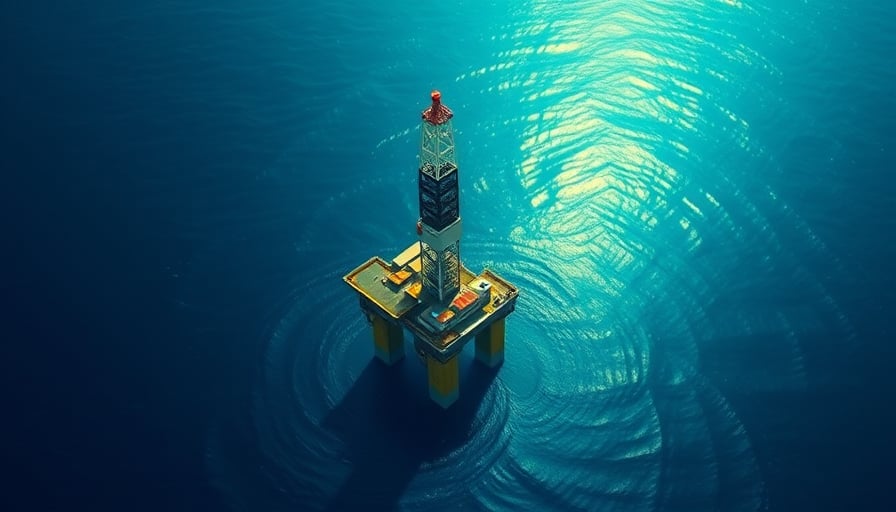Equinor ASA Faces a Mixed Set of Strategic Developments
Equinor ASA, a preeminent player in the global energy sector, has recently experienced a series of pivotal events that collectively shape the company’s trajectory. While the firm’s share price has shown a moderate decline amid market volatility, the underlying strategic initiatives demonstrate a nuanced approach to long‑term value creation, risk management, and alignment with evolving energy paradigms.
1. Enhancing the Vestbase Field for Long‑Term Production
The company’s flagship Vestbase field—operational for 25 years—has been a cornerstone of its upstream portfolio. Equinor’s announced upgrade program aims to extend production to beyond 2040, reflecting a calculated effort to prolong asset life while preserving output levels. Key aspects of the investment include:
- Technological Modernisation: Implementation of advanced subsea completion systems and real‑time monitoring to optimise recovery rates.
- Economic Considerations: The capital intensity of the upgrade is weighed against the expected extended revenue stream, with sensitivity analyses indicating a favorable internal rate of return under current oil price scenarios.
- Regulatory Alignment: The strategy incorporates forthcoming Norwegian environmental regulations, ensuring compliance while maintaining operational efficiency.
This initiative underscores a fundamental principle in upstream management: balancing immediate cash flow with strategic asset stewardship.
2. Commencing Production at Brazil’s Deep‑Water Field
Equinor’s expansion into the South American market is marked by the impending start of oil production at a sizeable deep‑water field off Brazil’s coast. The project, delayed by permitting and technical hurdles, now signals a critical milestone in the company’s growth agenda. The significance lies in:
- Geopolitical Diversification: Reducing dependence on the North Sea by establishing a presence in a high‑potential basin with supportive legal frameworks.
- Capital Deployment: Allocation of significant equity and debt financing, with an expected payback period aligned with the company’s return on investment thresholds.
- Synergy with Existing Operations: Leveraging existing logistics and expertise to manage the new field, thereby reducing incremental learning costs.
This move aligns with a broader industry trend of energy majors seeking offshore opportunities in emerging markets to counteract declining production in mature basins.
3. Rethinking Offshore Electrification Amid Cost Pressures
The decision to abandon the electrification of offshore platforms—originally intended to reduce carbon intensity—was prompted by escalating project costs. Instead, Equinor will integrate selected platforms into Norway’s onshore power grid. This pivot reflects:
- Cost‑Benefit Analysis: Detailed engineering studies revealed that grid interconnection would lower lifetime energy expenses relative to on‑site power generation.
- Climate Commitments: While the shift satisfies regulatory obligations, it has elicited mixed reactions from environmental groups, who question the broader emissions implications.
- Operational Flexibility: Connecting to the mainland grid enhances reliability, particularly during inclement weather that can disrupt offshore power supply.
The decision demonstrates the company’s willingness to adapt strategies in the face of fiscal realities while maintaining a commitment to sustainable operations.
4. Market‑Wide Influences and Share‑Price Impact
Equinor’s share performance has been further influenced by macro‑level developments:
- Nordic Market Decline: A broader downturn in Nordic equities on the recent Friday dampened investor sentiment, reflecting concerns about regional economic headwinds and tightening monetary policy.
- Maersk Contract Termination: The news of Maersk ending a contract for an offshore wind vessel—intended for a New York project—has reverberated across the renewable energy supply chain, indirectly affecting Equinor’s ancillary investments and partnerships.
These external shocks illustrate how inter‑sectoral linkages, such as shipping logistics and offshore wind procurement, can ripple through traditional oil and gas firms.
5. Strategic Outlook and Long‑Term Objectives
Equinor ASA’s recent maneuvers reveal a company navigating a complex energy transition while safeguarding its core interests. The overarching strategic themes include:
- Portfolio Optimization: Balancing mature assets like Vestbase with new growth opportunities such as the Brazilian field to ensure a diversified revenue base.
- Cost Discipline: Prioritising projects that offer robust financial returns, exemplified by the decision to forego expensive offshore electrification in favour of grid connectivity.
- Stakeholder Engagement: Maintaining dialogue with climate advocates, investors, and regulators to align business practices with societal expectations.
In a sector where technological, economic, and regulatory forces intersect, Equinor’s adaptive strategy underscores the importance of analytical rigor and operational flexibility. By focusing on fundamental business principles and maintaining a holistic view of sectoral dynamics, the company seeks to sustain its competitive positioning and deliver long‑term shareholder value.
